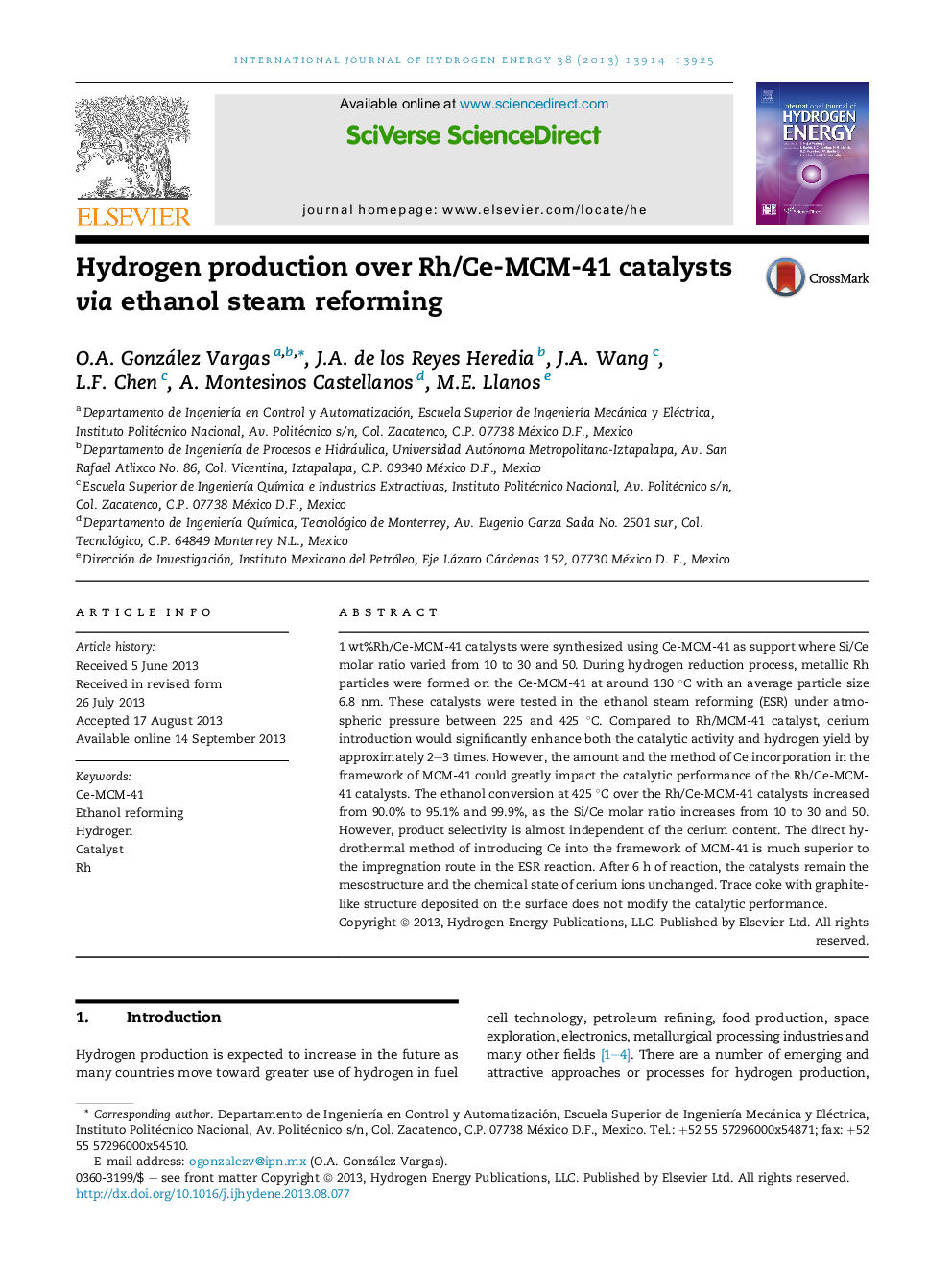| Article ID | Journal | Published Year | Pages | File Type |
|---|---|---|---|---|
| 1273062 | International Journal of Hydrogen Energy | 2013 | 12 Pages |
•Ce incorporation in the framework of MCM-41 is favorable to the reduction of Rh2O3.•Ce introduction profoundly enhance ethanol conversion and H2 yield by approximately 2–3 times.•The direct hydrothermal method of introducing Ce is much superior to the impregnation route.
1 wt%Rh/Ce-MCM-41 catalysts were synthesized using Ce-MCM-41 as support where Si/Ce molar ratio varied from 10 to 30 and 50. During hydrogen reduction process, metallic Rh particles were formed on the Ce-MCM-41 at around 130 °C with an average particle size 6.8 nm. These catalysts were tested in the ethanol steam reforming (ESR) under atmospheric pressure between 225 and 425 °C. Compared to Rh/MCM-41 catalyst, cerium introduction would significantly enhance both the catalytic activity and hydrogen yield by approximately 2–3 times. However, the amount and the method of Ce incorporation in the framework of MCM-41 could greatly impact the catalytic performance of the Rh/Ce-MCM-41 catalysts. The ethanol conversion at 425 °C over the Rh/Ce-MCM-41 catalysts increased from 90.0% to 95.1% and 99.9%, as the Si/Ce molar ratio increases from 10 to 30 and 50. However, product selectivity is almost independent of the cerium content. The direct hydrothermal method of introducing Ce into the framework of MCM-41 is much superior to the impregnation route in the ESR reaction. After 6 h of reaction, the catalysts remain the mesostructure and the chemical state of cerium ions unchanged. Trace coke with graphite-like structure deposited on the surface does not modify the catalytic performance.
Graphical abstractFigure optionsDownload full-size imageDownload as PowerPoint slide
